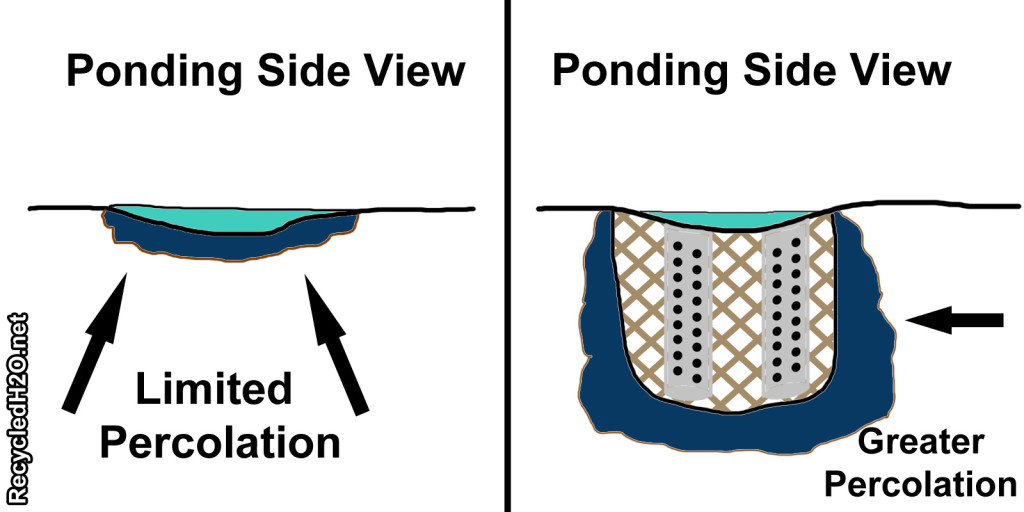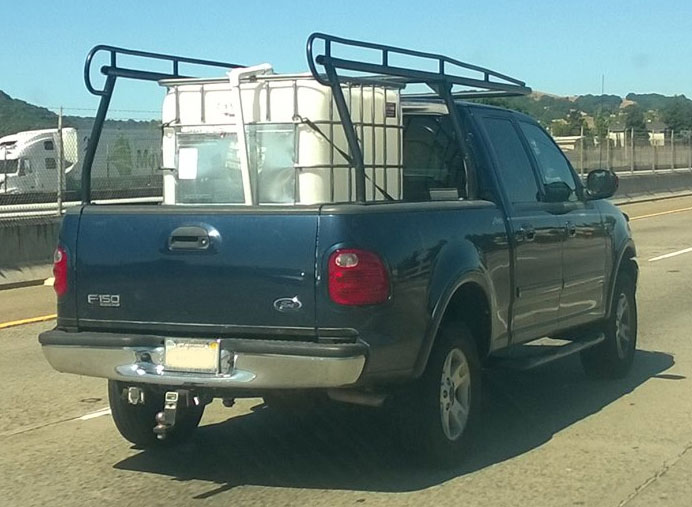Is water ponding on your property after El Niño rains? Do pools of water sit for long periods of time and don’t drain? RecycledH2O visited The Ruth Bancroft Garden in Walnut Creek, California and discovered what they did to resolve their ponding problem.
There were multiple ponds that would always form when it rains across the 3.5 acre drought tolerant garden, nestled in the heart of Walnut Creek.
A number of factors have created a hardpan under the topsoil which impedes percolation. Once water is directed below the hardpan it is better able to percolate into the soil, recharging the water table.
Supplies & tools needed for project:
- 3” drain pipe with pre-drilled holes
- 3” black drain grate
- Porous Landscape Fabric
- Aggregate gravel or similar
- Post-hole digger

Drawing showing side view
Steps to build percolation basins:
 After the first rains this fall, flags were placed in low areas where water would collect.
After the first rains this fall, flags were placed in low areas where water would collect.- When the rains stopped and the ground dried out a post-hole digger was used to dig a 12” hole to about 2-3 feet deep.
- A series of 3” plastic pipes were inserted into the hole with a drain opening at the top.
- The pipes had a series of holes predrilled and then wrapped in a porous material.
- The remaining air gaps were then filled with aggregate gravel.
This basic solution doesn’t avoid ponding in the garden, but it does reduce the length of time that flooding persists.
Update: 1/23/2016 – Added video of basin in action
A larger drainage problem existed adjacent to the nursery and was solved using a system called Flo-well sold by NDS.
The system essentially creates an air pocket that can hold up to 50 gallons of rain water at one time. It also has pre-drilled holes that then allow the water to percolate out and into the water table. Two flo-wells were tied together using perforated drain pipe. This system requires a larger investment in cost, time and manpower to install, but works very well.
Learn about techniques like this and many other gardening tricks at The Ruth Bancroft Garden in Walnut Creek, CA.





Leave a Reply